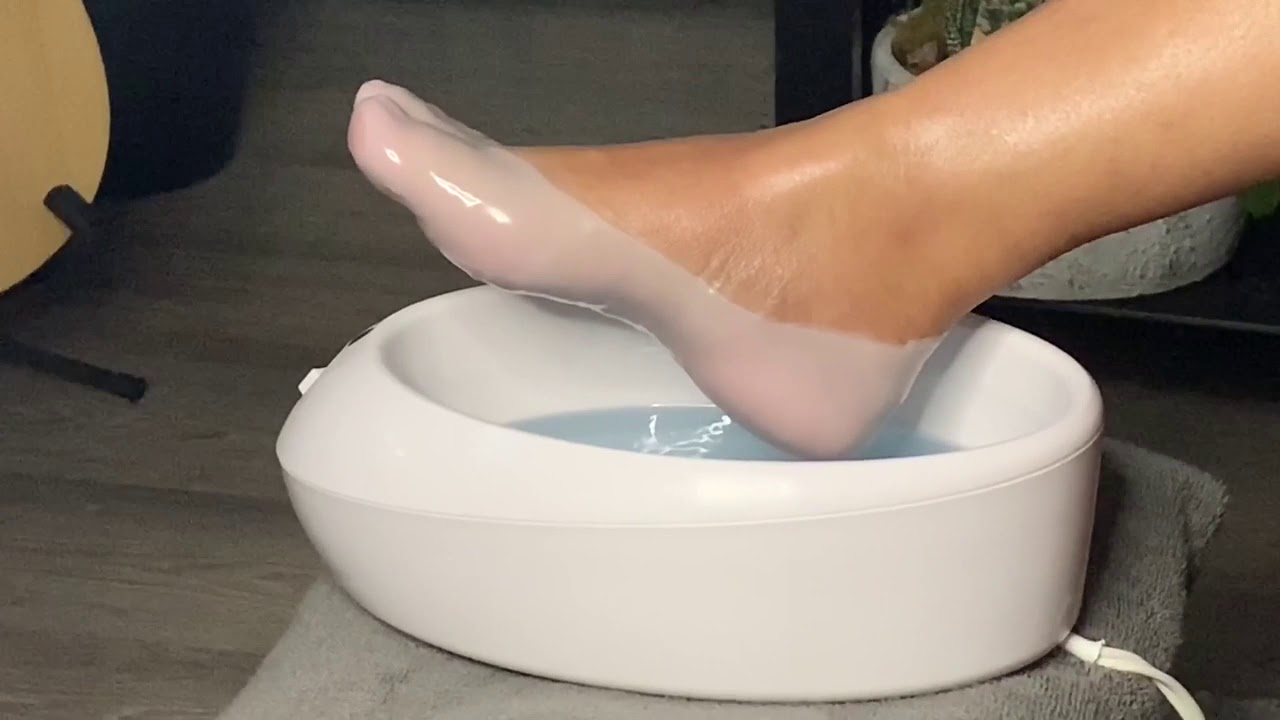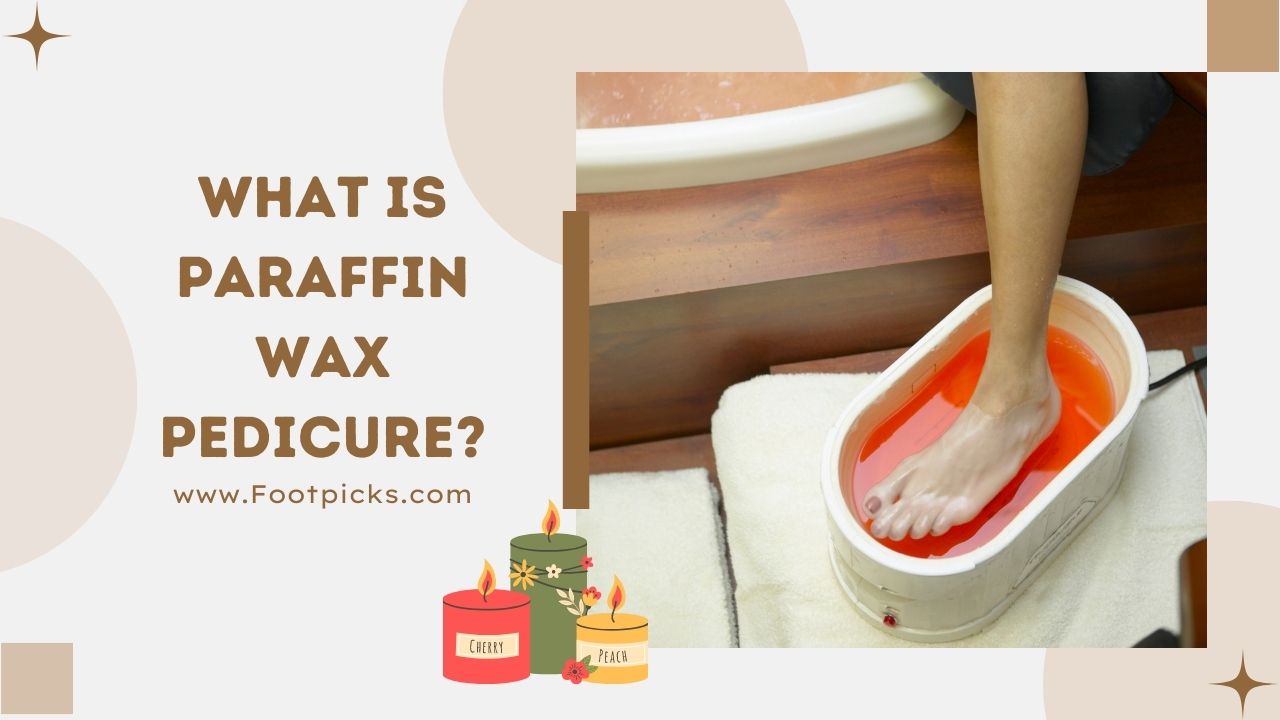Do you even know what is Paraffin wax pedicure? There are so many types of pedicures available in the market right now. From ancient herbal care to therapeutic procedures via technical advancements. You name it they probably have it. Paraffin wax pedicure is one of them.
But what is it? How do they do it? Can I do it safely in my home?
The answers to all of these questions will be answered in today’s article what is Paraffin wax pedicure. So? So, if you’re interested, make sure to read it till the very end.
Well, let’s move forward without further ado. Start to read!
Table of Contents
What is Paraffin Wax Pedicure?
The paraffin wax pedicure is a type of pedicure where paraffin (a type of wax) is melted and applied to the feet. This type of pedicure is super beneficial for those who need moisturized skin and want to prevent toenail breakage.
How Does a Paraffin Wax Pedicure Work?
Before we get into how it works, let’s understand what is it exactly.
Paraffin Wax is an odorless white wax that melts at a low temperature. Hence it can be easily melted to a warm liquid. This allows the wax to be gentle and soothing enough to apply it the skin.
As for how it works. The wax traps heat inside of it. The heat in the paraffin wax helps immensely with the absorption of moisturizing products, thus making it a perfect addition to your regular pedicure routine.
Is Paraffin Wax Pedicure Worth It?
In my humble opinion. It’s worth it to get a paraffin wax pedicure. Regular pedicure pedicures only clean your feet. But with a paraffin wax pedicure, you’ll get both the cleansing and healing aspect of any express pedicure.
Allow me to elaborate on the benefits:
- Moisturizing: Paraffin Wax is an extremely effective moisturizer. It is a natural emollient that is very similar to baby oil. It keeps the moisture locked in. The warmth will open up pores as well. This allows for better penetration of the cells to rejuvenate.
- Soothing: Perhaps the most ideal part of this pedicure is that it’s very relaxing. That’s why most people get it. Keeping your feet well-maintained is one of the best ways to keep them looking healthy and young.
- Softness: A solidified paraffin wax will remove dead skin as well as calluses and corn. It is an effective exfoliator that melts all the dirt and build-up, exposing a super smooth canvas.
- Relief of Muscle and Joint Pain: The added benefit of this pedicure is that it helps stimulate blood flow, relax sore muscles, relieve pain, and make joint stiffness in the joint go away.
Anybody suffering from arthritis, fibromyalgia, and osteoarthritis can get this pedicure as an effective therapy for their pain.
Step-by-Step Guide to a Paraffin Wax Pedicure
You can recreate a salon like Paraffin Wax Pedicure without the need for a paraffin machine. And for that you’ll need:
- Paraffin wax
- Essential oils of your choice
- A large container (microwave-safe)
- Coconut oil/ Olive oil/ Jojoba oil
Now follow these steps:
Step 1: Prepare your feet using a nail polish remover, remove any nail polish off your toes.
Using nail clippers, cut your toenails to the length and form you choose.
Smooth away any rough edges on your nails with a file.
Step 2: Remove one foot from the water and pat it dry with a towel to exfoliate and smooth the skin. Gently exfoliate the soles of your feet with a foot scrub or a pumice stone, focusing on rough areas like the heels and balls of your feet.
Step 3: Using a cuticle pusher or an orange stick, push back your cuticles. Avoid causing any discomfort or damage by being gentle. If necessary, use a cuticle nipper to remove any excess cuticles or hangnails.
Step 4: Wash your feet will cold water in between all the steps.
Step 5: If you’re using a paraffin wax bath, follow the manufacturer’s directions to melt the wax and bring it to the proper temperature.
If you have a paraffin wax warmer, melt the paraffin wax blocks or beads according to the directions.
Set 6: Before applying test the temperature of the melted wax to ensure it is not too hot before applying the paraffin wax. It should be warm enough to be comfortable.
Dip one foot into the paraffin wax bath or use a brush to apply a coating of molten wax to your foot, working your way up to the ankle. Repeat the process with the opposite foot.
Step 7: Relax and wait for the paraffin wax to harden for about 10-15 minutes, or until it produces a solid coating.
Step 8: Remove the wax by gently peeling off the paraffin wax layer from each foot, beginning at the ankle. The wax, as well as any dead skin or contaminants it has caught, should readily fall off.
Step 9: Finally, rinse your feet with warm water to eliminate any leftover wax residue. Using a towel, pat your feet dry.
Apply a moisturizer or foot cream to keep your feet supple and hydrated.
My Favorite Tools for Paraffin Wax Pedicures
Some Alternatives to Paraffin Wax Pedicure
This section is for those who are allergic to paraffin wax. You could use soy-based wax or any type of wax that are 100% natural and plant-based. Not only do they prevent uncomfortable itchy-ness but also super gentle on the feet.
There are plenty of options available on Amazon. Just look for non-toxic natural wax and select the one you prefer. Add some essential oils to custom-make your wax for your pedicures.
Safety Precautions for Paraffin Wax Pedicure
Not everything will be fine and dandy. Of course, there are some safety issues with this type of pedicure. As it deals with hot substances. The side effects of such pedicures include swelling, heat rashes, and even breakouts.
But not to worry. As this only seems to happen to those who have ultra-sensitive skin or some type of skin issue. Also please avoid getting this pedicure if you have open wounds on your feet. Poor blood circulation patients should also avoid this type of pedicure.
FAQs
If you are curious to know more about what is Paraffin wax pedicure, then you can read this FAQ section to know more!
Q1. What is a paraffin wax pedicure and how does it differ from a regular pedicure?
A paraffin wax pedicure is a type of spa treatment that involves using paraffin wax to moisturize, soothe, and soften the skin of the feet. The process starts with a standard pedicure that includes nail trimming, shaping, and cleaning followed by a paraffin wax treatment, where your feet are dipped into a warm, melted paraffin wax. As the wax hardens, it traps heat and moisture, providing a deep hydration for your feet. Once the wax is removed, you’ll find your feet feeling refreshed and smoother than with a regular pedicure.
Q2. Are paraffin wax treatments only for pedicures, or can they be used for manicures too?
Good news! Paraffin wax treatments can be enjoyed for both hand or foot care. They are an excellent way to moisturize and soften the skin on your hands and feet and can be incorporated into both manicures and pedicures at a nail salon or spa.
Q3. How does the paraffin treatment process work?
Your technician will first heat the wax in a special paraffin bath, ensuring it reaches a safe temperature. They’ll apply the wax by having you dip your hand or foot into the container, which will coat your sensitive skin in a thin layer of the liquid wax. The process may be repeated several times to build up a thicker layer, and then the technician might wrap your wax-covered hands or feet in plastic, towels, or mitts to help retain heat. Once the wax has cooled and hardened, usually after around 10-15 minutes, the technician will remove it, revealing softer and more hydrated skin.
Q4. What are the benefits of a paraffin wax pedicure?
Paraffin wax pedicures offer many therapeutic benefits, including moisturizing, soothing, and softening the skin.

Closing Thoughts
As amazing as Paraffin Wax Pedicure can be. We should be very careful about how frequently we do this type of pedicure. Extended use can compress the blood vessels and that can lead to blood clotting. But do let that discourage you from getting one. It’s completely safe!
How you liked today’s article what is paraffin wax pedicure? Is there any other form of pedicure you’d like me to talk about next? Let me know in the comments below.








